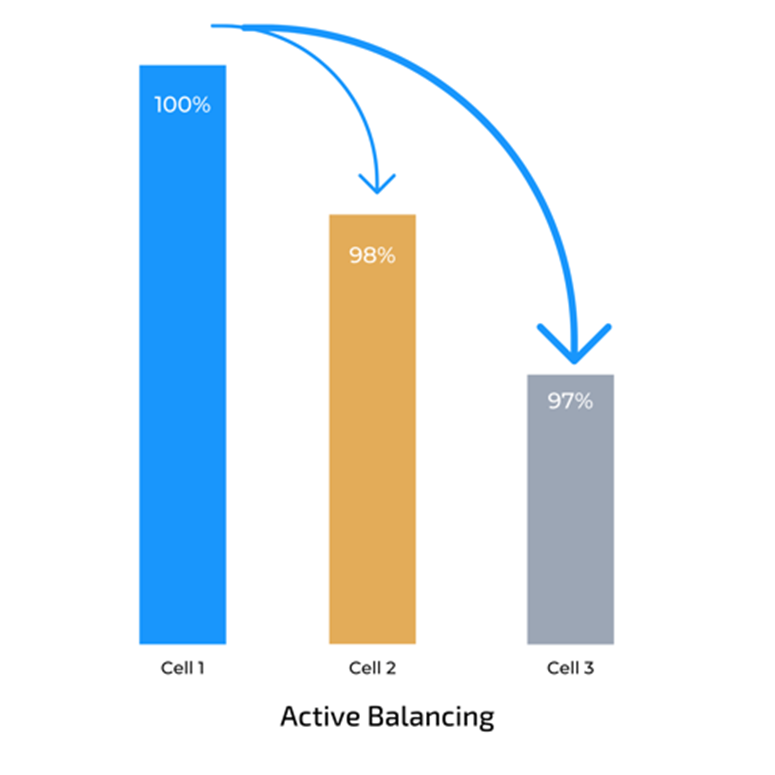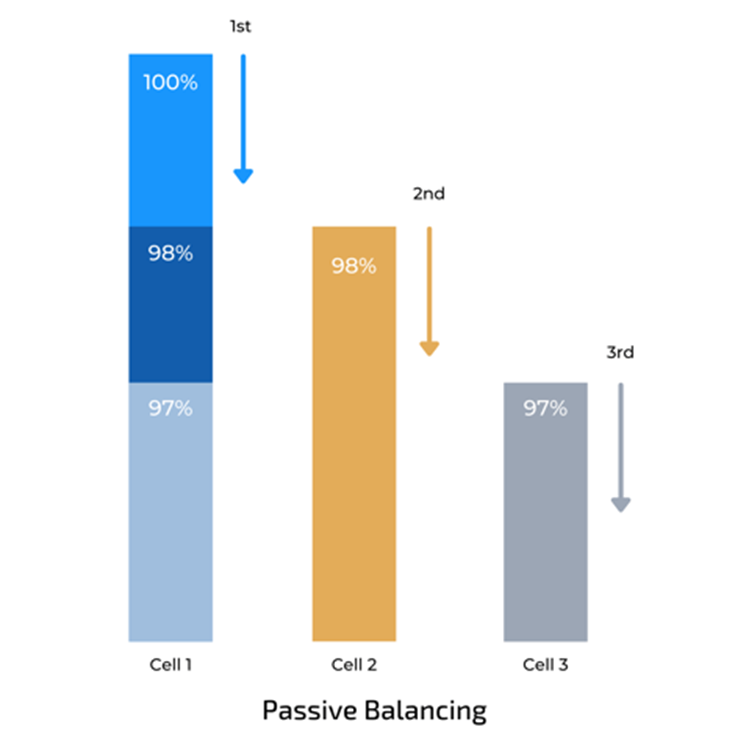This is the fourth in a six-part series on lithium batteries:
- What’s Inside a Lithium-Ion battery? link
- How is a Lithium-Ion battery different than a Lead-Acid battery?
- Which is a better Lithium-Ion battery, NMC or LFP?
- Aren’t all Battery Management Systems (BMS) the same?
- What is the future of lithium batteries?
- Beyond Lithium Ion - what’s the future of energy storage and renewable energy generation?
No battery manufacturer will tell you their batteries are unsafe. However, we at Green Yachts believe less than 1% of lithium batteries are safe enough to put on a marine vessel. The difference between safe and unsafe batteries is not the chemistry as our last blog discussed (link), but due to the wide differences in how the BMS (Battery Management System) functions.
We experienced a thermal runaway event on a sailboat with a LiPO4 lithium battery that provided power to a bow-thruster because the BMS did not properly regulate battery charging (fortunately we were at the dock). And yet that battery complies with all these safety standards:
- 2006/66/EC on environmental EU compliance
- 2004/108/EC on electromagnetic compatibility
- IEC 62133, safety requirements for portable sealed secondary cells
- IEC 62619, safety requirements for secondary lithium cells and batteries
- 3, procedures, test methods and criteria relating to class 9 lithium-ion batteries
- IEC 62281, safety of primary and secondary lithium cells and batteries during transport
Battery Safety Standards such as ASTM F3353-19, American Bureau of Shipping Guide for Use of Lithium Batteries in the Marine, or DNV Guidelines for Large Maritime Battery Systems and Offshore Industries are NOT effective and none of the safety provisions in place stopped incidents like this.
If the regulatory agencies around the world don’t have adequate safety guidelines for lithium batteries, what can a vessel operator do to ensure the safety of their vessel?
The first thing one can do is not buy cheap batteries. If you think you’re getting a deal on lithium-ion batteries, be careful. For example, many cheaper lithium-ion batteries such as what one can buy on Alibaba don’t even have a BMS. They employ battery balancers that only optimize cell voltage and protect from over and under current while charging.
The other thing vessel operators can do is understand what functions the BMS of the battery they are purchasing perform. Unfortunately, this information is not often publicly available. On occasion, one can see public information that gives a clue. Take the battery that had the thermal runaway event while we were on board. The manufacturer’s manual says that the BMS for their lithium batteries are a “drop-in replacement for lead acid batteries.” If you read our blog post about lead-acid vs lithium-ion batteries (link), you know that this should be a red-flag indicator. However, it is not reasonable for boaters to be able to read through a manual to know if a battery is safe.
At the end of this blog, we’ll list the batteries that Green Yachts believes has a robust enough BMS to provide the best available safety. First, we’ll go through the function of a BMS and what differentiates a good BMS from one that is not safe and/or causes unnecessarily rapid battery degradation.
The first task of a BMS is to balance the SOC among all the cells in battery string (a string being any group of batteries connected in series).
Imbalance happens one cell’s SOC become higher or lower other cells. Causes of this can be cells with different Coulombic efficiency, which can happen if there is low quality control in cell production. Other causes of imbalance are excessively long periods of time without shore charging, cells having different net current, different discharge rates or different current leakage.
In other words, imbalance occurs and because of this, a BMS is programmed to balance the SOC between cells. There are two ways that a BMS can do this, passive and active balancing.
According to Dr. Gregory Plett, passive balancing drains charge from cells with too much charge through discharge and/or energy dissipation in the form of heat. Active balancing moves charge from “high charge cells” to “low charge cells” in order to balance the state of charge between cells in a battery bank.


Passive balancing is less costly and has proven to be effective. The simplest passive balancing method is a fixed shunt resistor is placed in parallel with each cell and drains a cell with a high SOC. This protects cells, but causes energy loss. A slightly better version of this method includes a BMS-controlled switch that is closed when a cell has too much charge allowing them to drain first and this second method of passive balancing is recommended by Green Yachts. Passive balancing does not increase the SOC in weak cells and it takes longer to balance cells passively, but this generally isn’t a problem as a BMS continuously balancing cells. Only if the batteries were unused, say over the winter, would it take longer for cell SOC to passively balance. Batteries that are unused over the winter should be charged overnight before use to allow full cell balancing.
Active balancing causes cells with a high SOC to send charge to cells with lower SOC bringing the cells into uniform balance without energy drainage. If charging isn’t done regularly, two or more times a week, active balancing can extend battery life by preventing a weak cell from remaining weak for a long period of time, degrade over time, and force early battery retirement. Active balancing is achieved by using switched capacitors, transformer/inductor designs and active employment of DC/DC converter techniques.
In sum, while there are differences between passive and active balancing, both work if done well. It is good to ask two questions related to cell balancing of any battery manufacturer:
- Does your BMS do passive or active balancing?
- Specifically, how do that?
This brings us to the question of how a BMS knows what the energy characteristics of the cells are and how a BMS knows cell information. This is the biggest differentiator between a high and low quality BMS. The BMS monitors the following variables:
- Total voltage OR voltage of each individual cell
- Average temperature OR temperature of individual cells
- Charge (Ah) being discharged or charged
All BMSs calculate the SOC and adjust the SOC based on the amperage discharged or discharged. There are many ways this is done, but most BMSs use Coulomb counting to track SOC and changes to SOC. SOC is important in order to know one’s range, but it is not critical to battery safety and thus using an algorithm to calculate SOC is perfectly fine and safe.
However, voltage and temperature are critical to battery safety. If you open up a good battery, you will see that there are individual wires going from the BMS to each of the cells. These wires directly monitor voltage of individual cells. It’s called single-cell voltage monitoring. A less safe strategy employed by most battery manufacturers is to measure the voltage of a group of cells connected in series. Because of this, one cannot know the voltage of each individual cell directly and instead a BMS uses an algorithm to calculate individual cell voltage based off the aggregated data from the group of cells
The difference between direct monitoring and calculating is important. If one calculates, the accuracy is lower. In order to not have too many false positive readings outside voltage operating parameters, the parameters need to be relaxed. Therefore, when calculating voltage, one has a less accurate methodology and lower tolerances of variation before a BMS responds. In contrast, when there is a wire running to each individual cell, a BMS has constant direct and accurate information for each cell. A BMS can have tight tolerances for voltage imbalances. For example, Valence batteries depower output from a battery when there is more than a .3V imbalance between cells in a battery bank. A Spear Power Systems and EPTechnologies BMS shuts creates an alarm, then depowers and ultimately shuts down a string if there is more than .3V between individual cells. They also both shut down a battery string if the BMS does not receive individual cell voltage information for a few seconds. Given this level of preventative measures by direct monitoring of cell voltage, It is hard to imagine a thermal runaway event occurring when such direct monitoring and aggressive safety protocols are in place and this is exactly why monitoring individual cell data rather than calculating it off of data from a module bus bar is supremely important for lithium battery safety.
One of the questions we often get at Green Yachts is whether one can stick a Tesla battery in a boat and our answer is no. Tesla batteries, both the 18650 and the newer 4680 cells are small and cylindrical. A Tesla battery pack has thousands of these cylindrical cells. It would be impossible to run an individual wire to thousands of cylindrical cells and thus the use of cylindrical cells dictates that cell voltage be measured for a group of cells and calculated. All battery manufacturers who make truly safe batteries use prismatic cells, which are bigger and in the shape of a rectangle. A battery module might have 2 to 24 cells depending on the size of the battery and it is much easier to run a dozen wires than a few thousand. Thus, one way vessel operators can tell a battery is not safe is if it has cylindrical cells and this is why we at Green Yachts say most Tesla batteries (some LFP Tesla batteries are made with prismatic cells) are not safe enough for the marine sector.
If you have made it through this blog, pat yourself on the back. You now are equipped with an understanding of what makes a lithium battery safe that exceeds 99% of vessel operators. Please share this post with other boaters. Please use this knowledge to make smart choices about batteries.

And speaking of smart choices, here are the battery companies that Green Yachts believes makes a safe battery with active balancing and direct individual cell monitoring:
AYK - commercial LFP batteries
Cleantron – recreational 48V NMC batteries
EPTechnologies – commercial and recreational NMC batteries (and their batteries have an extra safety feature of a temperature activated fire retardant system within each battery module)
MG Batteries - recreational 48V LFP batteries
Spear Power Systems - commercial NMC batteries
Valence - recreational 24V LFP batteries
Of note, the batteries from these five companies are not as inexpensive as other offerings as one can find on the market. It’s not that these companies are simply asking a higher price. These manufacturers spend more to build a safer battery and this costs more. But, these batteries often last longer, which saves money and of course, one cannot put a price on safety.



Leave Comment